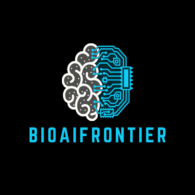In today’s digital age, healthcare professionals rely on technology to store patient data, communicate with colleagues, and manage daily operations. But with increased technological advancements comes a growing need for cybersecurity awareness. As we move into 2025, cyber threats continue to evolve, with AI playing a major role in both protecting and attacking healthcare systems.
This article reflects on past cybersecurity trends and introduces key predictions for 2025 and beyond, focusing on how they impact the healthcare industry.
1. The Rise of Passkeys for Authentication
What It Means for Healthcare
Passwords are becoming a thing of the past as passkeys gain traction. Passkeys use biometric authentication (such as fingerprints or facial recognition) and are considered more secure than traditional passwords. Major companies, including Google and Apple, are already integrating passkey technology, and its adoption is expected to rise across industries, including healthcare.
Why It Matters:
- Reduces the risk of password-based cyberattacks.
- Enhances security for patient portals and electronic health records (EHRs).
- Minimizes phishing attempts targeting healthcare professionals.
What You Can Do:
- Enable passkeys for hospital and clinic logins.
- Educate staff about the benefits of biometric authentication.
- Transition away from weak, password-based security models.
2. AI-Generated Phishing Attacks Are Becoming More Advanced
Phishing scams are not new, but artificial intelligence is making them more dangerous than ever. In 2025, we expect to see AI-generated phishing emails that mimic real messages with shocking accuracy, tricking even the most cautious professionals.
How This Impacts Healthcare
- Cybercriminals can generate realistic emails that impersonate hospital administrators, requesting login credentials.
- AI-generated messages can manipulate healthcare providers into sharing sensitive patient data.
- The rise of deepfake technology could enable cybercriminals to impersonate medical professionals in video calls.
What You Can Do:
- Be skeptical of unexpected emails requesting personal information.
- Train healthcare staff to recognize AI-generated phishing emails.
- Implement email filtering and security awareness programs.
3. Deepfake Technology in Financial and Healthcare Fraud
A recent case demonstrated how deepfake technology was used to mimic a high-ranking executive’s voice, leading to a $25 million financial scam. This technology could have major implications for the healthcare industry, particularly in:
- Medical Identity Fraud – Deepfake videos or voice recordings could be used to manipulate medical records or authorize fraudulent prescriptions.
- Impersonation of Medical Experts – Criminals could create fake health consultations to mislead patients.
- Insurance Fraud – Fraudsters may use deepfake technology to create fake injury claims or falsify health documents.
What You Can Do:
- Use multi-factor authentication (MFA) for verifying identities.
- Train staff to recognize signs of deepfake manipulation.
- Implement AI detection tools to identify fake audio and video content.
4. The Growing Threat of “Shadow AI” in Healthcare
“Shadow AI” refers to the unauthorized use of AI tools within organizations. In healthcare, this could mean medical professionals using AI-powered diagnostic tools or chatbots without proper security measures in place.
Risks of Shadow AI in Healthcare:
- AI models may not be compliant with HIPAA regulations.
- Patient data could be exposed if AI tools store information insecurely.
- Unvetted AI applications may provide incorrect diagnoses or recommendations.
What You Can Do:
- Establish clear policies for AI use in medical settings.
- Work with IT departments to approve AI tools before implementation.
- Conduct regular audits to identify and mitigate unauthorized AI use.
5. Generative AI and the Risk of AI-Written Malware
Generative AI has the power to create realistic text, images, and even software code. Unfortunately, cybercriminals are now using AI to generate highly sophisticated malware that can bypass traditional security defenses.
Potential Impacts on Healthcare:
- AI-generated ransomware could target hospitals, demanding payments to unlock critical medical data.
- Smart medical devices (such as pacemakers or insulin pumps) could be exploited using AI-powered malware.
- Healthcare IT systems may be at risk if AI-generated cyberattacks become more widespread.
What You Can Do:
- Regularly update hospital cybersecurity defenses.
- Train IT teams to recognize AI-generated malware threats.
- Invest in AI-driven security solutions that detect abnormal patterns.
6. The Quantum Computing Threat: “Harvest Now, Decrypt Later”
Quantum computing has the potential to break traditional encryption methods, putting sensitive patient data at risk. The concept of “Harvest Now, Decrypt Later” refers to cybercriminals collecting encrypted data today in hopes that future quantum computers will be able to decrypt it.
Why Healthcare Professionals Should Be Concerned:
- Hospitals store vast amounts of confidential patient information.
- Hackers could steal encrypted medical records and decrypt them later.
- Medical research data, including drug patents and clinical trials, could be compromised.
What You Can Do:
- Stay informed about post-quantum cryptography developments.
- Push for encryption updates that are resistant to quantum attacks.
- Ensure healthcare IT teams are preparing for long-term data security.
Final Thoughts: Preparing for the Future
Cybersecurity is evolving rapidly, and healthcare professionals must stay ahead of emerging threats. While AI and quantum computing present exciting opportunities for medicine, they also introduce significant risks. By adopting proactive cybersecurity measures, healthcare organizations can better protect patient data and maintain trust in the digital age.
What are your thoughts on these cybersecurity predictions? Do you have concerns about AI, passkeys, or deepfake technology in healthcare? Share your insights and let’s discuss how we can navigate these challenges together.
